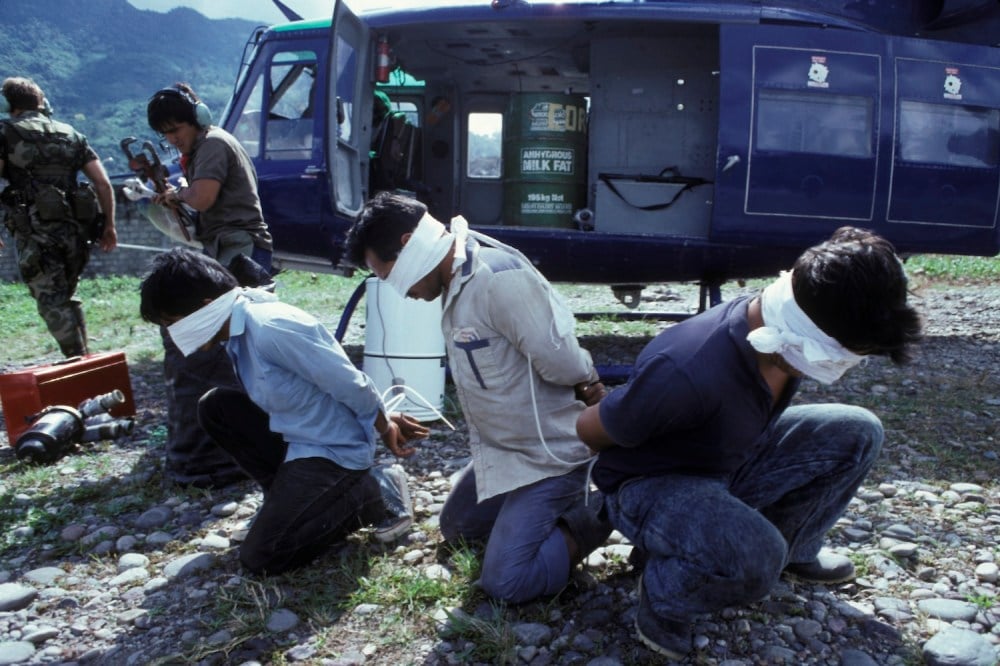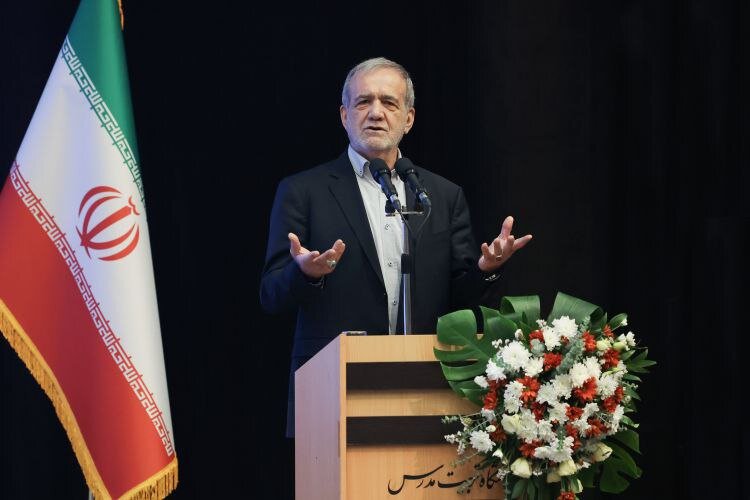Copyright Foreign Policy

Since early September, the U.S. military has launched a series of deadly attacks against suspected drug-running boats in the Caribbean and Pacific Ocean, resulting in the deaths of at least 70 people so far. The Trump administration has presented several dubious legal and rhetorical arguments for these controversial—and unlawful—operations. Many center around “narco-terrorism,” a designation that President Donald Trump presents as a self-evident justification for the use of military force. Understanding the real history of the term “narco-terrorism” is now more important than ever. To be sure, there have long been links between narcotics trafficking and terrorism. Some drug gangs use terrorist tactics to intimidate governments and rivals, while some terrorist groups use drug sales to fund their activity. But conflating the many, tangled relationships between terror and trafficking under the single heading of narco-terrorism is a recipe for bad policy. From the 1980s to the present, narco-terrorism has been invoked to justify hyper-militarized policies that consistently prove ineffective in stemming drugs and violence alike. Since it first emerged out of Latin America in the early 1980s, the term narco-terrorism has been given multiple, often contradictory, definitions. The term was reportedly first used by then-Peruvian President Fernando Belaúnde Terry after Shining Path, a Maoist guerrilla group, attacked a prison and later a police station in 1982. He described the attack as “narco-terrorism—the union of the vice of narcotics with the violence of terrorism.” Over the years, the “union” between drug traffickers and guerilla groups in Peru took various forms. Shining Path protected coca farmers in the areas that it controlled from government eradication efforts, before itself transitioning into cocaine processing and distribution. As a CIA report from 1992 diplomatically put it, the relationship between the guerillas and narco-traffickers was “characterized by both cooperation and friction.” At times, they collaborated to attack state power. But when drug traffickers attempted to undercut Shining Path’s price controls, designed to help coca farmers, they were executed by the guerrillas. On other occasions, drug traffickers launched violent attacks against guerrilla groups. In that same report, the CIA concluded that despite some benefits, “insurgent participation in the drug trade has adversely affected the narcotics industry and raised tension between the two groups,” highlighting the fraught, rather than inherently symbiotic, relationship between drugs and insurgency in Peru and beyond. Perhaps no country in the world has been more associated with the term narco-terrorism—and hypermilitarized responses—than Colombia. The associations partly stem from terror attacks by narcotics traffickers, such as the Medellín Cartel, on politicians, state officials, journalists, and public figures. The Revolutionary Armed Forces of Colombia, a communist guerilla group known by its Spanish acronym FARC, became the poster child for a narco-terrorist or narco-guerrilla group. This accusation was not without merit, as FARC came to generate significant funding from its involvement in all stages of the narcotics business. Many right-wing paramilitary groups, established to counter extortion and kidnapping by leftist guerillas, also raised funds in the drug business and operated with the implicit and explicit support of Colombia’s armed forces. The drug-terror connection in Colombia was influential in shaping global counternarcotics policy. In the 1980s, the Medellín Cartel’s use of terrorist tactics pushed the United States to advocate for harsher strategies against the drug industry in Colombia, including aerial eradication of marijuana crops and the extradition of narco-traffickers to the United States. The U.S. State Department argued that the “alliance between guerrillas and the traffickers” required focusing on “attacking drugs by hitting the insurgency.” But not all U.S. agencies agreed on the extent of these links across time. Like Shining Path, FARC’s relationship to drug trafficking organizations was characterized by friction as much as by cooperation. In 1987, the United States intervened in the region and launched “Operation Snowcap,” which deployed Drug Enforcement Administration (DEA) agents and Army Special Forces to provide paramilitary, law enforcement, and intelligence support to Bolivia, Peru, and Ecuador. Not everyone was comfortable with this aggressive approach to counternarcotics. A DEA official warned that his agents had “crossed the line, from the commonly accepted role of domestic narcotic law enforcement, to the role of an infantry combat advisor.” Unless the operation was revised, he predicted, “agents are going to agonize … through an excruciating death on an isolated jungle floor.” Just two years later, however, the George H.W. Bush administration approved the “Andean strategy” for Colombia, Peru, and Bolivia, which greatly expanded military, law enforcement, and intelligence assistance to tackle what it described as “an insidious combination of insurgents and drug traffickers.” The strategy went beyond prior law enforcement approaches by providing “[i]ncreased military assistance to neutralize guerrilla support for trafficking.” Over the next several years, the United States continued counternarcotics assistance, which contributed to successes against the Medellín and Cali cartels. However, these actions ultimately led to the fragmentation, not the end, of the narcotics industry. Smaller and less hierarchical drug trafficking groups emerged, and FARC, along with other left-wing guerrilla groups, and the United Self-Defense Forces of Colombia, a coalition of right-wing paramilitaries, filled gaps in the narcotics industry left by the major cartels. In 1999, Colombia and the United States announced Plan Colombia, a joint strategy aimed at concluding the state’s war with guerrilla groups, promoting development, and curbing the narcotics industry within six years. While the plan emphasized human rights, governance, and socioeconomic goals, most U.S. funding was dedicated to military aid. The new George W. Bush administration then oversaw a relaxation of rules, which allowed counternarcotics funding to be used for counterinsurgency purposes. The effect was to further blur the fight against the narcotics industry and the fight against guerrillas. Although Plan Colombia helped pave the way for a 2016 peace accord with the FARC, it also led to the “hardening of the conflict in which the civilian population has been the main victim,” according to Colombia’s Truth Commission, an investigative body established as part of the peace deal. The cost of this transformation was staggering; the results were only mixed. Between 1989 and 1999, Washington provided Colombia with roughly $1 billion in counternarcotics and related funding. This figure rose to a total of more than $10 billion between 2000 and 2018, following the implementation of Plan Colombia. The human cost was far higher. Between 1985 and 2018, 450,664 people were killed during the civil conflict, according to research carried out by the Truth Commission, and more than 120,000 had disappeared. The cocaine industry, by contrast, lives on. The narco-terrorism narrative experienced a resurgence in post-9/11 Afghanistan, where the “war on drugs” and the “war on terrorism” converged. Before the intervention, Western politicians and officials claimed that the Taliban “controlled” the country’s vast opium industry. (Some claimed that al Qaeda had also worked with the Taliban to “jointly exploit” the narcotics industry, though the final report of the United States’ 9/11 Commission dismissed the idea that “Bin Ladin was involved in or made his money through drug trafficking.”) Despite the lack of evidence, the narco-insurgency narrative was instrumental in informing counternarcotics policies in Afghanistan. U.S. officials, many of whom had previously worked on Colombia, argued that the Taliban had transformed into the FARC, with drug money funding their insurgency. But while the Taliban did generate profits from several stages of the drug trade, they never “controlled” what remains a decentralized business. Moreover, the amount of money that it made from narcotics was vastly exaggerated. Like FARC, the Taliban had several income streams, including taxing a range of legal and illegal industries in the territories that it operated in. As in Latin America, State Department officials advocated for a widespread eradication campaign, including aerial spraying, claiming it would deny the Taliban revenue. But as Afghan and British officials pointed out, the costs of mass eradication would outweigh the benefits. The Taliban already generated significant political—rather than financial—capital from protecting poppy farmers. If the fields were destroyed, the farmers would have no alternative livelihoods. The practical consequences of aerial eradication, including damage to water supplies, livestock, and other crops, would further undermine the U.S. “hearts and minds” campaign. Talked out of mass eradication but still armed with the narco-terrorism narrative, the United States pursued other methods. In 2005, the DEA created Foreign-Deployed Advisory and Support Teams (FAST) program, a modified version of Operation Snowcap. The paramilitary units, which partnered with U.S. and coalition special forces to target drug traffickers and opiate laboratories, regularly got into gunfights with enemy forces, resulting in numerous agents sustaining injuries. The following year, the United States introduced a narco-terrorism statute, giving the DEA “authority to pursue narcotics and terrorism crimes committed anywhere in the world—if a link can be established between a drug offense and a terrorist act or group.” It was put to good use in Afghanistan, where—by 2008—U.S. military officers who had long opposed involving troops in the counternarcotics effort believed that the Taliban was inextricably linked with the drugs industry. The narco-insurgency narrative became dominant. U.S. Army Gen. Dan McNeill, the head of the International Security Assistance Force (ISAF), reportedly commented, according to WikiLeaks, that “when he sees a field of poppy, he sees the Kalashnikovs and improvised explosive devices (IEDs) that the poppy will fund.” To tackle this threat, ISAF’s role expanded to combat drug dealers linked to the insurgency. Some of these dealers were also placed on the Joint Prioritized Effects List—a kill list—as they were deemed “legitimate targets.” Breaking the narco-insurgency link became a key plank in the United States’ counternarcotics strategy, despite the fact that Afghan government officials were just as much, if not more, involved in the narcotics industry than the Taliban. In the years that followed, counternarcotics slipped down the agenda. However, in 2017, Army Gen. John W. Nicholson, the commander of U.S. and NATO forces in Afghanistan, claimed that the Taliban had “evolved into a criminal organization and truly fit the definition of a narco-insurgency.” To prevent a purported $200 million in drug proceeds from entering the “Taliban’s bank accounts,” the U.S. military launched a controversial bombing campaign against narcotics laboratories but ruled out striking civilian production targets as a “disproportionate” use of force. Over the next year, it struck approximately 200 opiate “factories.” Independent research showed, however, that it did little to deny revenue to drug traffickers or the Taliban. The narco-terrorism narrative has since been applied across the world to define various relationships between drugs and terrorism, with varying degrees of accuracy. In Europe, the label has long been used to describe the Kurdistan Workers’ Party, which uses drug trafficking to fund terrorist activities. In recent years, the term has experienced a resurgence, with former Belgian Justice Minister Vincent Van Quickenborne describing drug-related violence and intimidation, including the attempted kidnapping of politicians, as “narco-terrorism.” In West Africa and the Sahel, for instance, al Qaeda in the Islamic Maghreb have been characterized as “predatory” toward drug traffickers and the benefits as “one-sided rather than truly cooperative and mutually beneficial.” In Mexico, there is debate over whether cartels truly count as terrorists. In some, but not all, of these cases, the term has been used to justify a hypermilitarized counternarcotics response. Ecuadorian President Daniel Noboa, for instance, has declared several states of emergency; deployed armed forces to Ecuador’s streets and prisons; and even formed a “strategic alliance” with Erik Prince, the founder of controversial U.S. private military firm Blackwater—all in the name of fighting narco-terrorism. While evidence clearly indicates that links exist between drug traffickers and terrorist and guerrilla groups, the suggestion of a strictly symbiotic relationship between them is misleading. This faulty diagnosis not only obscures real problems but also leads to inappropriate policy responses. At worst, governments have used the term narco-terrorism to provide political cover to deploy military, and often lethal, force to law enforcement matters. This is not only counterproductive—in many cases, it is also unlawful. History has shown that conflating the “war on drugs” with the “war on terror” has been ineffective in addressing both narcotics challenges and terrorism. Killing so-called kingpin traffickers in Colombia and bombing supposed narcotics factories in Afghanistan have not resulted in a lasting reduction of the drugs trade, in either Latin America or Southwest Asia. Infrastructure and individuals have been destroyed. But the underlying socioeconomic and political issues that enable the narcotics industry trade to flourish remain intact. The Trump administration is the latest in a long line of governments to use the term narco-terrorism to justify unprecedented action against drug traffickers. However, some indications suggest that the United States’s recent deployment of this narrative may be the prelude to something much darker.



